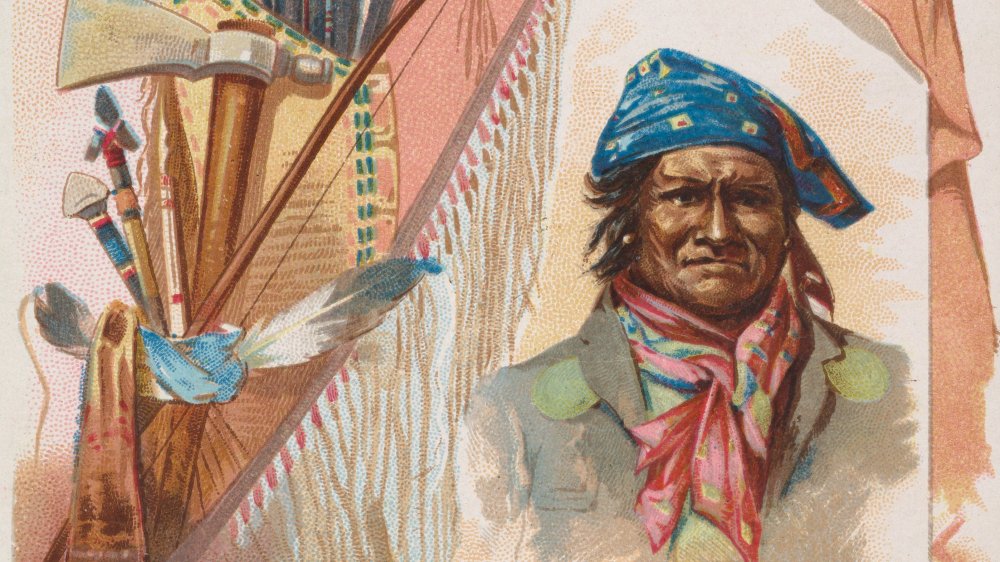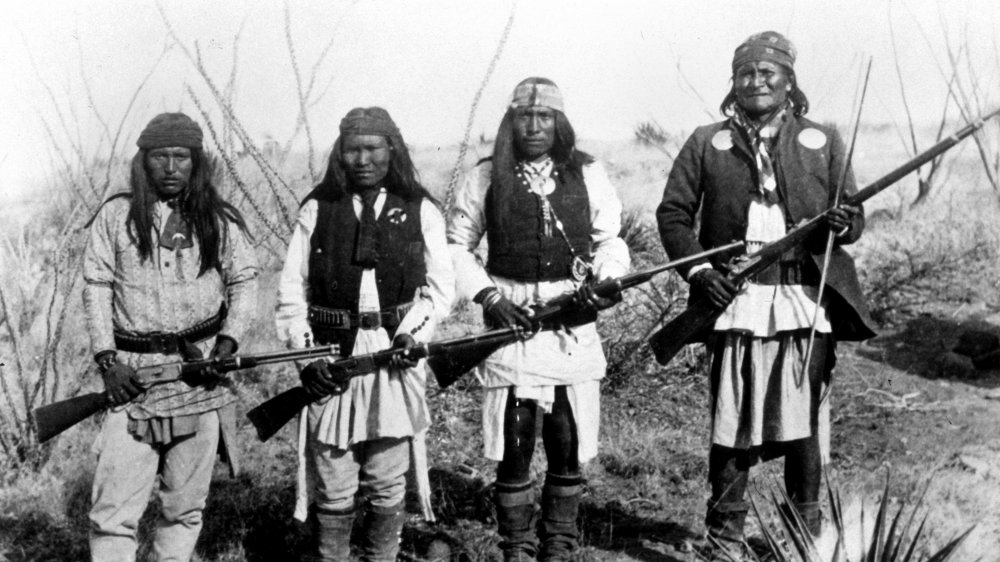Why The US Army Was So Afraid Of The Apache
The relationship between the US and the indigenous people of North America has been infamously bloody, cruel, and usurious.
As depicted on Vox, in a single century, from 1784 to when the Dawes Act was signed in 1887, native lands were stolen, bit by bit, until only tiny fragments of modern-day reservations remained. Before that, in 1795, Spain and the US split native lands, per the Treaty of San Lorento. This set the stage for further bloodshed, such as the Mexican American War from 1846-1848, which ended in the Treaty of Guadalupe Hidalgo, per History. This treaty established the Rio Grande as the border between the US and Mexico, however, the dividing line was a bit sloppy. As the Chicago Tribune cites, the land south of Arizona's Gila River, very well-suited for railroads, was overlooked. This time, instead of murdering for it, the US opted for the money option, and bought it for $15 million in 1852.
By then, that land had come to be occupied by the Apache, whose roots in such a harsh, brutal climate area go back to the 12th century. The ancient, pueblo-dwelling Anasazi had vanished from the area, and the Apache sought refuge from the Comanche driving them out of the Rocky Mountains, per Encyclopedia. The Apache were relentless combatants whose name for themselves simply means, "the people." They raided by necessity, much like Vikings, but only enacted war out of vengeance. Suffice it to say, the U.S. Army gave such a reason.
"The people" and "the enemy"
Of course, before the U.S. Army came along, the Apache had been locked in combat with the Spanish, since the late 1700's, before Mexico won its independence in 1810. The Spanish called their campaign against the Apache a "war of extermination." Needless to say, this laid the groundwork for mistrust with any future, non-Apache. The U.S. abutted the Apache in 1861, the same year that the U.S. Civil War began.
However, while the Civil War lasted four years, the Apache War lasted nearly 30, until the legendary Apache leader Geronimo surrendered to the US in 1886, as described by History. He was the final Native American leader to concede, and until then, he evaded capture and led a non-stop campaign against the U.S. Army, including both sides of the Civil War.
The Apache were successful due to the leadership of those such as Geronimo, as well as their ferocious, and fearless, battle tactics. It was the land itself — the lethal swelter of New Mexican and Arizonian desert — that gave them the advantage in guerrilla warfare. The U.S. Army simply couldn't cope, or use the same tactics it had used elsewhere: the land, so murderous to them, had been the Apache's home for centuries. Because of this, the U.S. assaulted any Apache they found, for fear that larger war parties would congregate.
The war really didn't die down until the US started recruited Apache themselves as scouts, per the official U.S. Army homepage.

